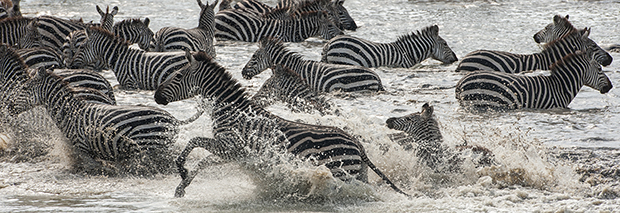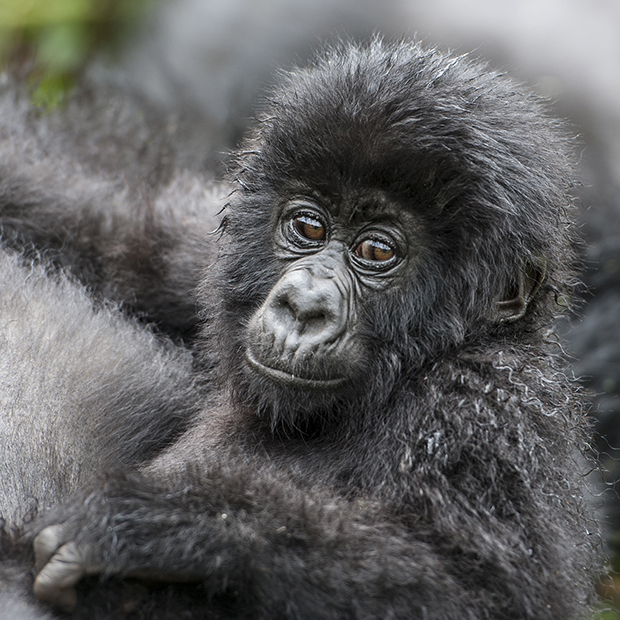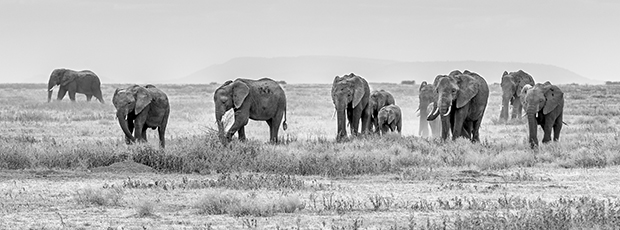In the second installment of Michael Snedic's three-part series on wildlife photography, he explains the finer points of composition, exposure and back-button focus.
See part one of 'How to shoot stunning wildlife shots'.
See part three of 'How to shoot stunning wildlifeshots'.
04 WHY IS MY IMAGE TOO BRIGHT (OR TOO DARK)?
When photographing a white animal in a bright environment, you need to use positive exposure compensation, as the camera's metering turns the scene to 'grey'. If using exposure compensation with aperture priority, try using plus one (+1) to start. Take a quick shot and then look at the histogram or the image on the back of the camera's LCD screen. If the image is still too grey/dark, increase the exposure a tad more, to say +1.3 , +1.7 or even +2 until you have the desired exposure (i.e. clean whites). For a black subject in a dark environment, do the reverse and use negative (-) exposure compensation. This will bring out the detail in the blacks. I encountered lots of zebra herds during our recent African photo adventure to Tanzania, but only once did I see the herd running through the water. Being a sunny day, with lots of white on the zebras coats and bright, reflective water, I used positive exposure compensation to correctly expose the image, otherwise the whites would have all ended up a dull 'grey'. Nikon D700, 70-200mm @ 200mm, 1/1000s @ f/8, ISO 400, hand-held.
I encountered lots of zebra herds during our recent African photo adventure to Tanzania, but only once did I see the herd running through the water. Being a sunny day, with lots of white on the zebras coats and bright, reflective water, I used positive exposure compensation to correctly expose the image, otherwise the whites would have all ended up a dull 'grey'. Nikon D700, 70-200mm @ 200mm, 1/1000s @ f/8, ISO 400, hand-held.
05 BACK BUTTON FOCUS
Many SLR cameras offer back-button focusing. This setting is invaluable for wildlife photography, especially for capturing birds-in-flight and other moving subjects. Explained simply, back-button focusing allows you to focus on the animal you are photographing by pressing a button on the back of your camera, then depressing the shutter button to take the shot. This setting is very useful for photographing a bird flying in a parallel line. With the camera's focus-point on the bird, keep following it as it is flying, finger half depressed on the shutter. When the bird is in a good position, simply let go of the focus button and take a series of shots (make sure you also use continuous shot or 'burst'). Even though you have let your finger off the focus button, your focus will remain on the bird as it is flying past, rather than focusing on the background. It may take a bit of practise to get used to back-button focus, but with practise it will become second-nature.
Being only metres away from this baby Mountain gorilla, in Rwanda, Africa, was a lifetime highlight. Sometimes, as in this example, you don't need to photograph the whole body of an animal to capture the 'essence' of its character. Focusing on the gorilla's face highlighted the cuteness of this gorgeous creature. Nikon D700, 70-200mm lens @ 200mm, 1/500s @ f/4, ISO 500, hand-held.
06 COMPOSITION ESSENTIALS
One of the most important aspects of creating a great wildlife image is good composition. You can own the most expensive photographic equipment, use all the correct settings and be in all the right places at the right times, but without good composition your images just won't grab people's attention.
Avoid putting your subject directly in the centre of your image. Try composing in a way that the subject's eye or head is positioned over one of the intersecting 'rule of thirds' lines. (The 'rule of thirds' is a method of composition that sees the image divided into imaginary thirds, like a 'noughts and crosses' grid. The key element of the picture is positioned over one of the four intersecting points.) Using a wide aperture can be an effective way to blur the background, reduce distractions and put the emphasis on the main subjects.

This herd of elephants, in the Serengeti, Africa, was walking straight towards me very slowly, enabling me time to compose the image so that most of them were not obscuring each other. Nikon D700, 70-200mm lens @ 200mm, 1/640s @ f/8, ISO 400, hand-held.
See part one of 'How to shoot stunning wildlife shots'.
See part three of 'How to shoot stunning wildlifeshots'.
Michael Snedic is a professional wildlife/nature photographer and professional photographic tutor. He is owner of WildNature Photo Expeditions, specialising in quality photography workshops and tours across Australia and overseas. His aim is to show participants the most amazing subjects and locations, while at the same time teaching the best techniques for photographing them.





